Have you noticed squishy floors? Developed mysterious health symptoms? Learn the red flags of a toxic mold problem in your house.
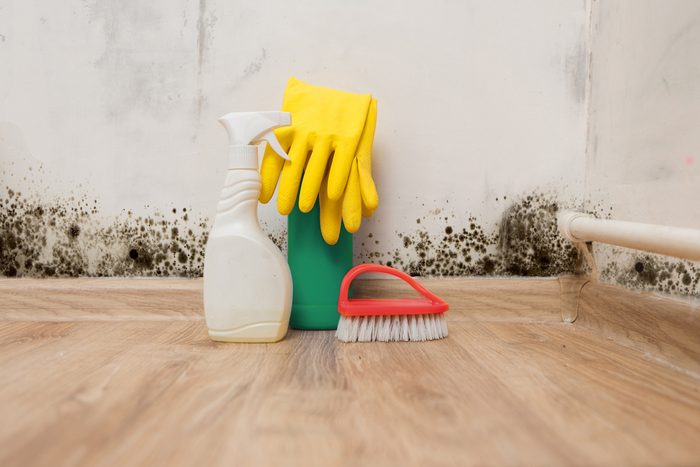
12 Hidden Signs Your House Could Have Toxic Mold

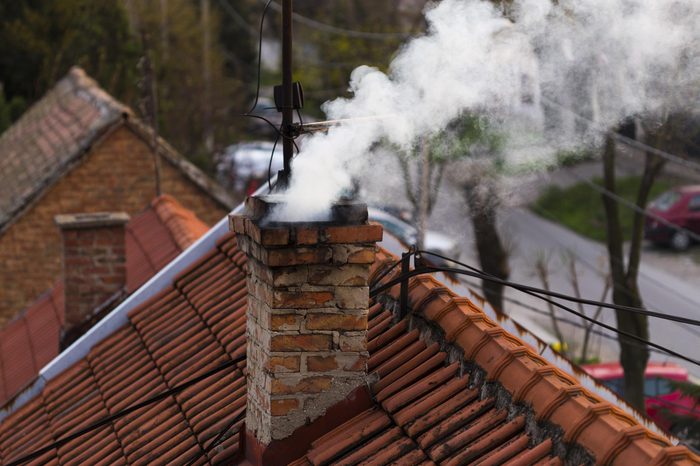
Your chimney smells weird
Chimney sweeps don’t only remove dangerous creosote buildup—they can clean out toxic mold too. Moisture can accumulate in the porous bricks and mortar of a chimney. Rusty chimney caps or flashing that need repair allow rain and snow to seep in, creating the perfect environment for mold to thrive. That may be the reason you notice funky smells when the wind is blowing in a certain direction. Fix the cap and flashing, and call the chimney sweep to extinguish the mold issues.

Your eyes are watery and stinging
People can have allergic reactions to mold, explains Dr. Parikh. The symptoms can include itchy and watery eyes, coughing and nasal congestion. If you suspect mold is triggering symptoms, the American College of Allergy, Asthma & Immunology suggests you track your reactions for two weeks to see if they kick in when you’re in certain rooms or spaces within your house. You can also visit an allergist for a blood or skin test to confirm the allergy and discuss treatment options.
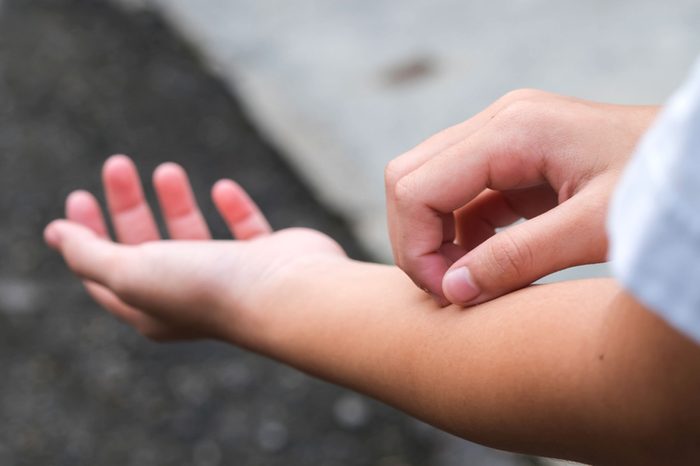
Your skin is tingling
Don’t ignore mysterious rashes—unexplained skin symptoms could be one of the warning signs of mold in the house. If you’re allergic to mycotoxins, you’ll experience tingling, itching or burning sensations when you come into contact with the mold. Your body is reacting by releasing histamines, which can give you dry, itchy and scaly skin and even hives. If your rash persists, see an allergist or dermatologist for mold allergy testing. On the home front, you may need to call in a mold specialist to locate and eradicate the mold growth.
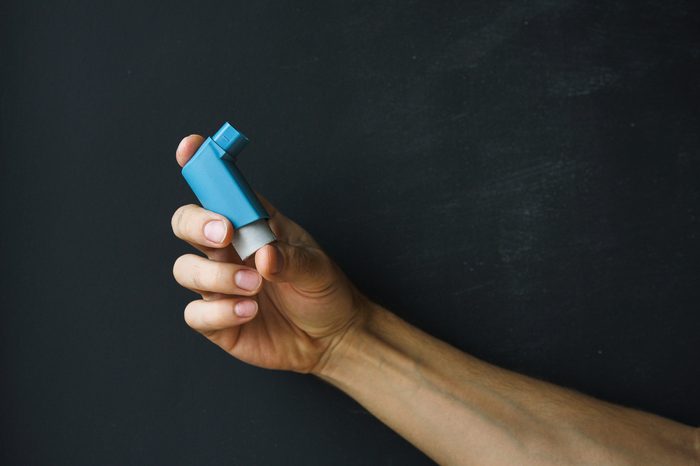
Your asthma is acting up
Mold spores can find their way into your lungs and trigger asthma symptoms. One study found that dampness or mold in houses could account for one in five cases of asthma in the United States. If your asthma seems to be getting worse, you may have undetected mold in your home, according to the Allergy and Asthma Foundation of America. The group warns that mold can also cause a rare but more serious condition called allergic bronchopulmonary aspergillosis, a dramatic allergic and inflammatory reaction that leads to severe sneezing, coughing and shortness of breath.
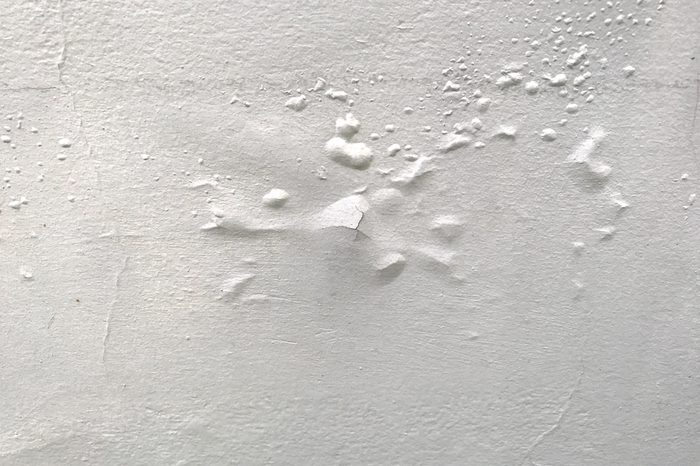
The paint is bubbling on your walls
Have you noticed that the paint is bubbling on the walls of your bathroom or near a window? One of the most common reasons paint begins to bubble is moisture. And where there’s moisture … there could be mold. You can’t just cover up the problem with a fresh coat of paint—you have to find the source of the moisture. It could be a damp windowsill, too much humidity or leaky plumbing. Once you fully fix the moisture issue, you can repaint. Just make sure to scrape, patch, clean and thoroughly dry the walls before rolling on a fresh coat.
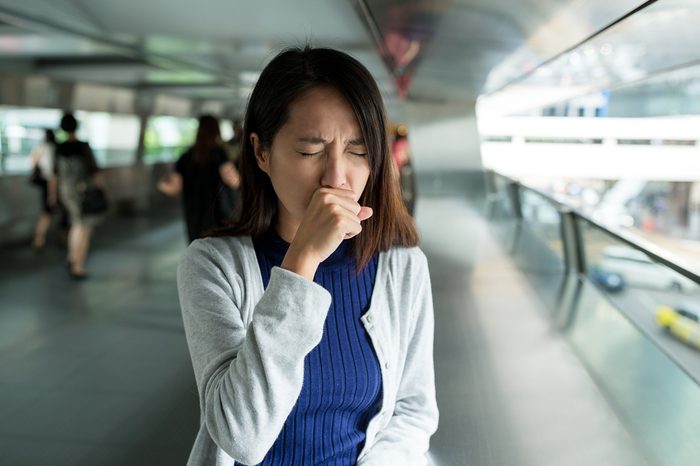
You’re coughing but don’t have a cold
The mycotoxin spores can find their way into your lungs and lead to a chronic cough, which can be one of the signs of toxic mold in a house. Be sure to visit an allergist. “Testing by a board-certified allergist is most helpful,” advises Dr. Parikh. “There is a lot of mold testing out there that is not evidence-based.” If you get a positive test for mold, the next step is to hire a mold eradication expert and address the problem.
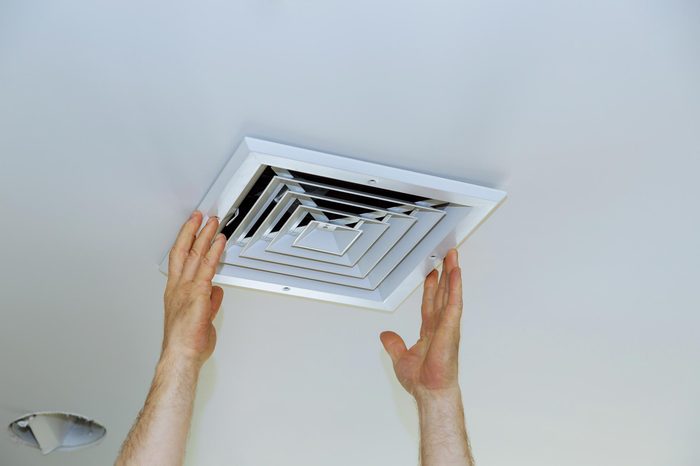
Your bathroom exhaust fan is on the fritz
“Mold is a particularly common problem in bathrooms with inadequate ventilation,” says Yoel Piotraut, the founder of MyHome Design + Remodeling. A bathroom exhaust fan is an essential tool to keep toxic mold at bay, but it won’t work if it’s clogged or not running well. In fact, if it’s still steamy five to ten minutes after you get out of the shower, your fan isn’t circulating enough air. It may need to be cleaned or replaced with a unit that meets the square footage of your bathroom. Piotraut also suggests cleaning the walls regularly with a bleach solution or other mold-killing product.

Your baby coughs at night
According to a study published in Annals of Allergy, Asthma & Immunology, infants exposed to mold in their homes were three times more likely to develop asthma by age 7. Symptoms to watch for include coughing (especially at night), difficulty breathing, fast breathing, frequent chest colds and wheezing or whistling sounds when exhaling.
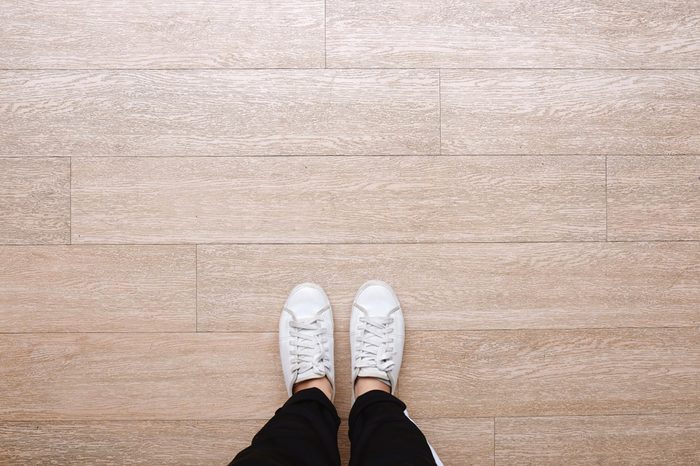
Your floor feels squishy
You should definitely be concerned about any soft spots in your hardwood floor. If you can access the subfloor through a crawl space or a basement, check for moisture. If that’s not possible, you’ll have to pull up a section of flooring. It’s worth it: That moisture—and any mold growth—will eventually spread. “If the wood floor is rotted, then the whole flooring needs to be changed,” says Piotraut. “If the flooring is still in good condition and only has a small amount of mold, it can be removed with mold remover.”
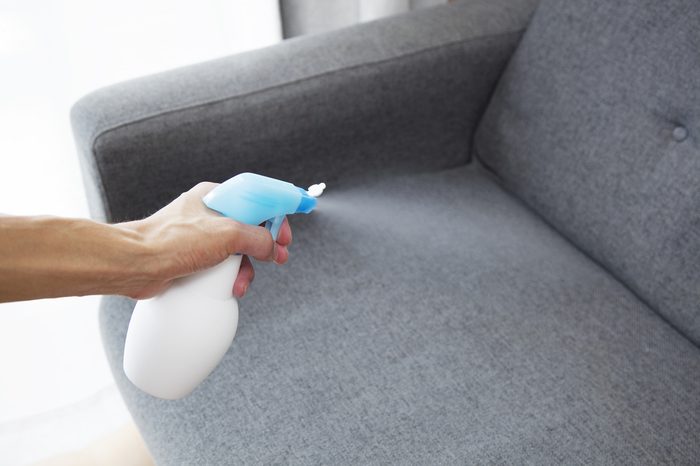
Your house smells musty
We’re not knocking your cleaning skills, but mold that grows undetected can pose a real health risk. This is especially true for the elderly, warns Dr. Parikh. “Their symptoms are generally similar, but all chronic conditions are worse in the elderly, as their bodies are not as resilient as [those of] younger patients and usually have other medical problems, which may interfere with or complicate the treatment,” says Dr. Parikh.

Your planter of begonias is leaking
“Exterior landscaping that is close to the home, as well as planters placed against exterior walls, can also lead to mold issues, especially for stucco homes,” says Gregg Cantor, president and CEO of Murray Lampert Design, Build, Remodel. Moisture finds its way inside the walls and can cause mold growth in the drywall and insulation. “This type of mold growth can be particularly dangerous because it’s rarely caught until the mold shows up on the interior of the wall, at which point the growth can be extensive and a danger to your health,” says Cantor.
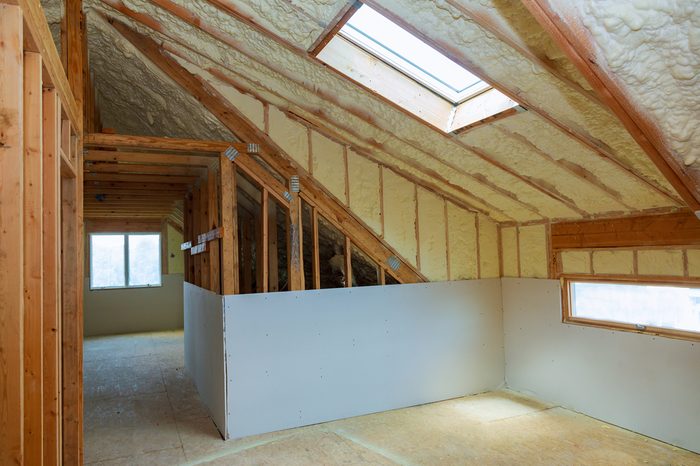
Your attic insulation is lumpy
Wipe off the spider webs and take a closer look at the insulation in your attic. “Attic insulation that is very lumpy and uneven-looking may mean a bigger problem,” says John Bodrozic, co-founder of HomeZada. “The insulation could be in bad shape due to unforeseen roof leaks, which could also mean potential mold issues.” If your attic has poor circulation or improper ventilation, it could create ideal conditions for mold growth. If you notice dampness in your attic, or you spot any signs of toxic mold in the house, play it safe and call in a mold eradication expert.
About the experts
|
Why trust us
At Reader’s Digest, we’re committed to producing high-quality content by writers with expertise and experience in their field in consultation with relevant, qualified experts. We rely on reputable primary sources, including government and professional organizations and academic institutions as well as our writers’ personal experiences where appropriate. We verify all facts and data, back them with credible sourcing and revisit them over time to ensure they remain accurate and up to date. Read more about our team, our contributors and our editorial policies.
Sources:
- American College of Allergy, Asthma, and Immunology: “Mold Allergies”
- Allergy and Asthma Foundation of America: “Allergic Bronchopulmonary Aspergillosis (ABPA)”
- ScienceDaily: “Mold exposure during infancy increases asthma risk, study finds”
- National Library of Medicine: “Public health and economic impact of dampness and mold”
- CDC: “Facts About Stachybotrys chartarum“
- Purvi Parikh, MD, allergist, immunologist and clinical instructor at NYU Grossman School of Medicine
- Yoel Piotraut, founder and managing partner at MyHome Design + Remodeling
- Gregg Cantor, president and CEO of Murray Lampert Design, Build, Remodel
- John Bodrozic, co-founder of HomeZada

















